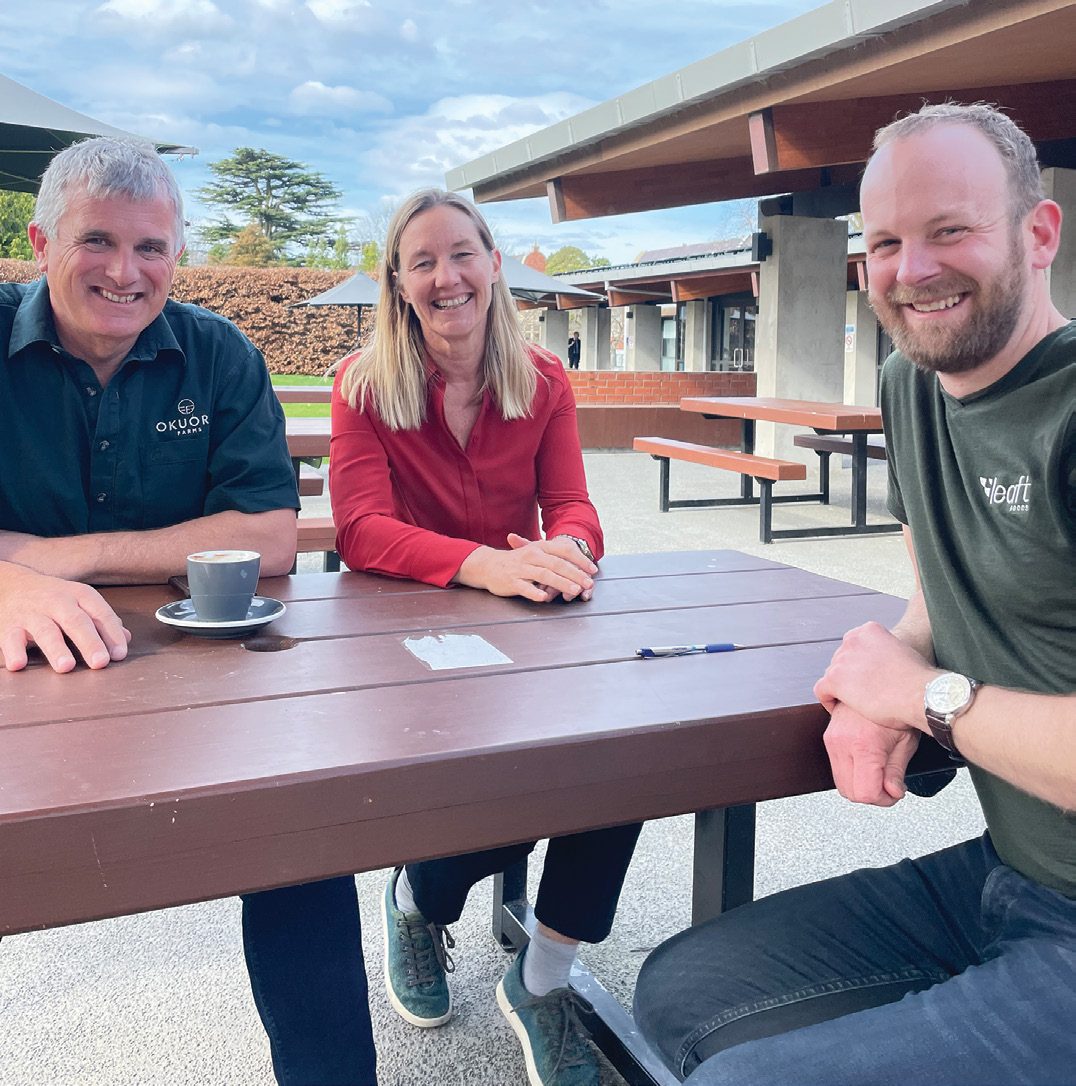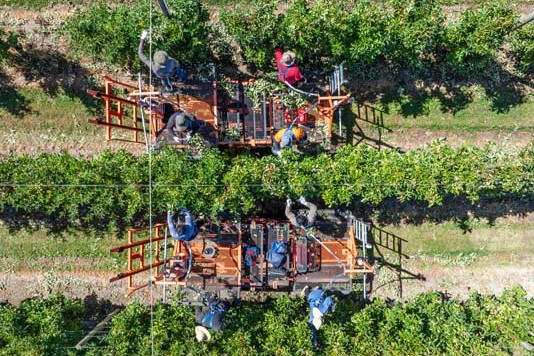Dairy farmers could diversify their incomes with development of a system to extract
protein from leafy plants. Anne Lee reports.
 For Maury and John Leyland Penno the next step after high profile dairying careers wasn’t to jump ship and turn their backs on dairy in favour of plant proteins – it’s been about bringing the two together.
For Maury and John Leyland Penno the next step after high profile dairying careers wasn’t to jump ship and turn their backs on dairy in favour of plant proteins – it’s been about bringing the two together.
The couple founded Leaft Foods in 2019 and in the next 12 months they hope to bring a new protein to market that could be a game-changer for dairy farmers – in a good way.
When they started the company they had both not long left full-time careers in the dairy sector, making names for themselves – Maury in Fonterra and John in founding Synlait.
“We were thinking about what was next for us and it was clear that plant protein was getting higher and higher up the agenda in terms of consumer interest – we’d started thinking how New Zealand farmers might participate in that,” John says.
At the same time, the pair were ever conscious of the environmental challenges pitching up at dairy.
But it was at a Lincoln University “hackathon,” which John says Maury had “convinced” him to come along to on a Sunday afternoon, that they both sat up and took notice.
Other plant proteins being produced were all related to seeds, beans or grains of crops and were already being grown elsewhere in the world at huge scale.
At the hackathon, though, they heard about Rubisco – an abundant protein in leafy plants – and the possibility that it could be extracted to make an extremely highly nutritious and valuable human food source.
The technology and process to extract it didn’t exist although there had been some progress made.
A curious and technically minded Maury set about researching the concept and managed to get to the “green protein” stage using a system she set up in the home kitchen.
The final white rubisco protein though is the “holy grail” and they realised that developing the process to extract it would be ground breaking.
“We were thinking about all of this through a lens of fitting into our farm systems and how we could combine it with what we do now and enhance it,” John says.
He was the chairman of the Freshwater Leaders Group which put forward tough recommendations to government on freshwater standards and policies.
“We know the issues we face in the dairy sector in terms of nitrogen and our waterways and we can all see the issues around climate.
“What we saw in this was something that wasn’t just an incremental change to tackle those environmental challenges but a massive step change,” he says.
“Although it’s not a massive step change in terms of farming practices,” Maury says.
THE CONCEPT
- A farmer grows a crop – lucerne is a front-runner at this stage but there are other possibles.
- The crop has the protein extracted to produce rubisco.
- The farmer earns income from that.
- The farmer also feeds the crop – minus the extracted protein – back to their cows as a low protein and therefore low nitrogen feed source.
- Cows excrete less nitrogen in their urine reducing nitrate leaching potential and nitrous oxide gas emissions helping cut greenhouse gas (GHG) emissions.
- The farmer could lower stocking rate and gain an income source.
- The cropped area has a lower GHG emissions profile.
Cows excrete less nitrogen in their urine reducing nitrate leaching potential and nitrous oxide gas emissions helping cut greenhouse gas (GHG) emissions. The farmer could lower stocking rate and gain an income source.

The cropped area has a lower GHG emissions profile.
“The simple solve for GHG emissions at the moment is to reduce stocking rates but that has an impact on income.
“If we can dovetail this into the farm system then even if you have to reduce stocking rate you’re going to have an income stream from the Rubisco and you’re lowering the environmental impact of the animals you are still carrying by feeding back the by-product,” John says.
This isn’t about plant protein vs animal protein.
“We’re dairy people – and we’re still dairy people and deeply committed to the dairy industry – it’s hugely important to New Zealand,” John says.
“Food is not enemies of each other – liking plants doesn’t make you anti-dairy,” Maury says.
“Adding foods into diets doesn’t mean removing foods from diets.
“What we are creating here is an integrated system that could have transformational benefits,” she says.
Ross Milne is Leaft Foods chief executive. He too has an impressive dairying CV. Following an honours degree in chemical and process engineering from Canterbury University he cut his teeth working on Synlait’s first milk powder drier before working in China on what was then the world’s largest infant formula plant.
After that he was off to Europe where he worked for GEA designing and building food processing plants and became the head of the company’s project execution group for Europe, Middle East and Africa. It was the chance to come home and work on something truly transformational that made him jump at the opportunity to lead Leaft Foods.
While a big part of his work over the past three years with Leaft has been focused on what could be world first technology to enable the extraction of the protein at a scalable level and produce it to exacting food quality standards he’s also been building a team to develop the business so it spans from inside the farm gate to the consumer. That’s why Lincoln has been a great base for the new company with onfarm research facilities and food technology research through Food Innovation Network Food South.
Lincoln University vice chancellor Grant Edwards says Lincoln University is excited with Leaft Foods innovations in land use and the creation of high value foods and it’s great to be able to partner with the company as it now also moves to farm scale studies.
Ross says they’re also working with Callaghan Innovation, Canterbury University and crown research institutes. Lincoln University’s Ashley Dene Research and Demonstration Farm has 35 hectares dedicated to Leaft studies. Lucerne is being used at the research farm with dairy cows also involved in the studies. Ross says a lucerne crop producing 20 tonnes drymatter (DM)/ha could produce 2500kg/ha of high-quality Rubisco protein.
“That’s revolutionary in itself – being able to produce that quantity of such high quality, nutritionally valuable protein,” Ross says.
It’s three to four times what a dairy system could produce alone so integrating into a dairy system, while reducing its environmental footprint could be a revolution in food production.
The concept and the company have attracted high quality attention, recently securing US$15 million of funding from Silicon Valley-based venture capital company Khosla Ventures – also backers of Rocket Lab. That funding is in addition to NZ$8m from the Ministry of Primary Industries through the Sustainable Food and Fibre Futures fund and the money John and Maury have poured into the venture.





